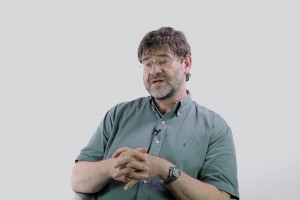Origin of Complexity in the Universe
MIT Professor Seth Lloyd on the origin of life, the butterfly effect, and the Universe as a quantum computer
How can we trap atoms to perform measurements on them? What is the importance of the temperature of atoms? Professor of Physics at Massachusetts Institute of Technology David Pritchard explains the way Magneto-Optical trap can help scientists to explore atoms and interactions between them.
The Magneto-Optical trap was an invention that enabled lots of people to start using cold atoms to do experiments. But what do we mean by ‘cold’ and what is the good of cold atoms? What I mean by ‘cold’ is measured on the absolute zero temperature scale – the Kelvin scale. When you are at room temperature, atoms move as fast as jet airplanes, and if you’re at one millionth of a Kelvin, then atoms move as fast as an Olympic sprinter, that’s pretty slow for atoms. Why do you want atoms to move slowly? Firstly, if you are making measurements on them, they are in your apparatus for longer, and so you have more time to make measurements. Secondly, it helps to study weak interactions between atoms.
When you have cold atoms, the first thing you think of to do is to do spectroscopy – just to measure some spectral lines much more carefully, or to make an atomic clock. Because the atoms are cold, and you either can leave them in a trap, or you can put them in a different kind of trap, we put them in the magnetic trap, and then you can do experiments on the trapped atoms. Another thing you can do is to look at atom collisions. By changing the magnetic field you even can change the interactions between atoms, make them weaker or stronger.
What are the great scientific problems that we might solve with cold atoms? Probably, the most outstanding one is, what about high-temperature superconductivity? About 20 years ago it was discovered that superconductors could be superconducting all the way up to half of room temperature or so. This was obviously a new kind of superconductivity. A new theory was needed for this. And we still don’t have that theory.

MIT Professor Seth Lloyd on the origin of life, the butterfly effect, and the Universe as a quantum computer

Physicist Paul Hartogh on primordial materials, escape of the atmosphere, and the Giotto mission

Electric vehicles, metal-based fuel, and the electrolysis method